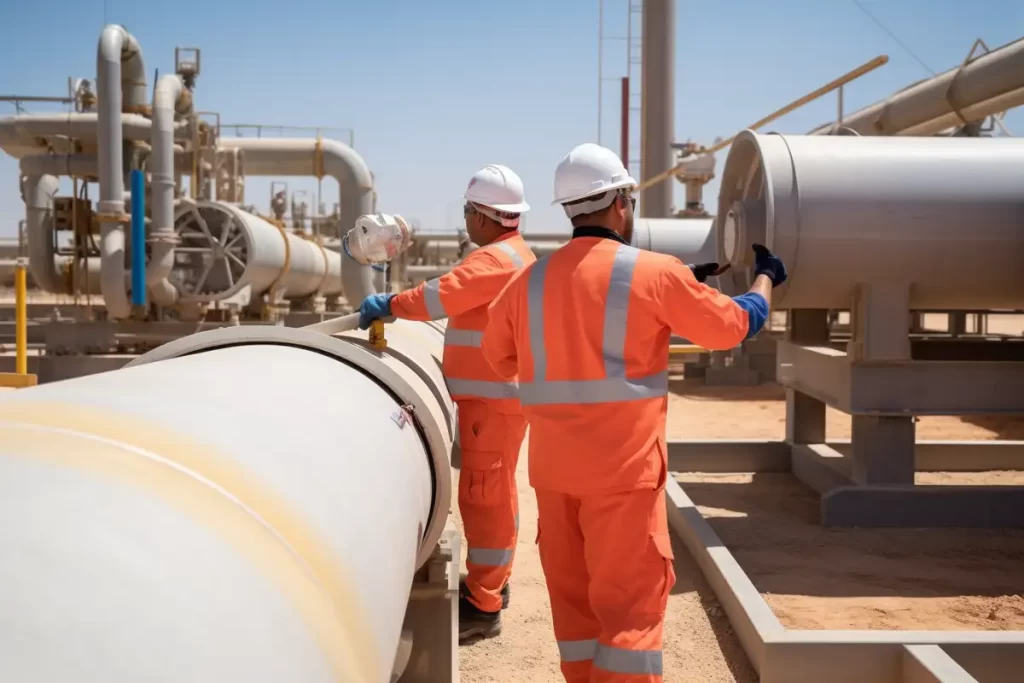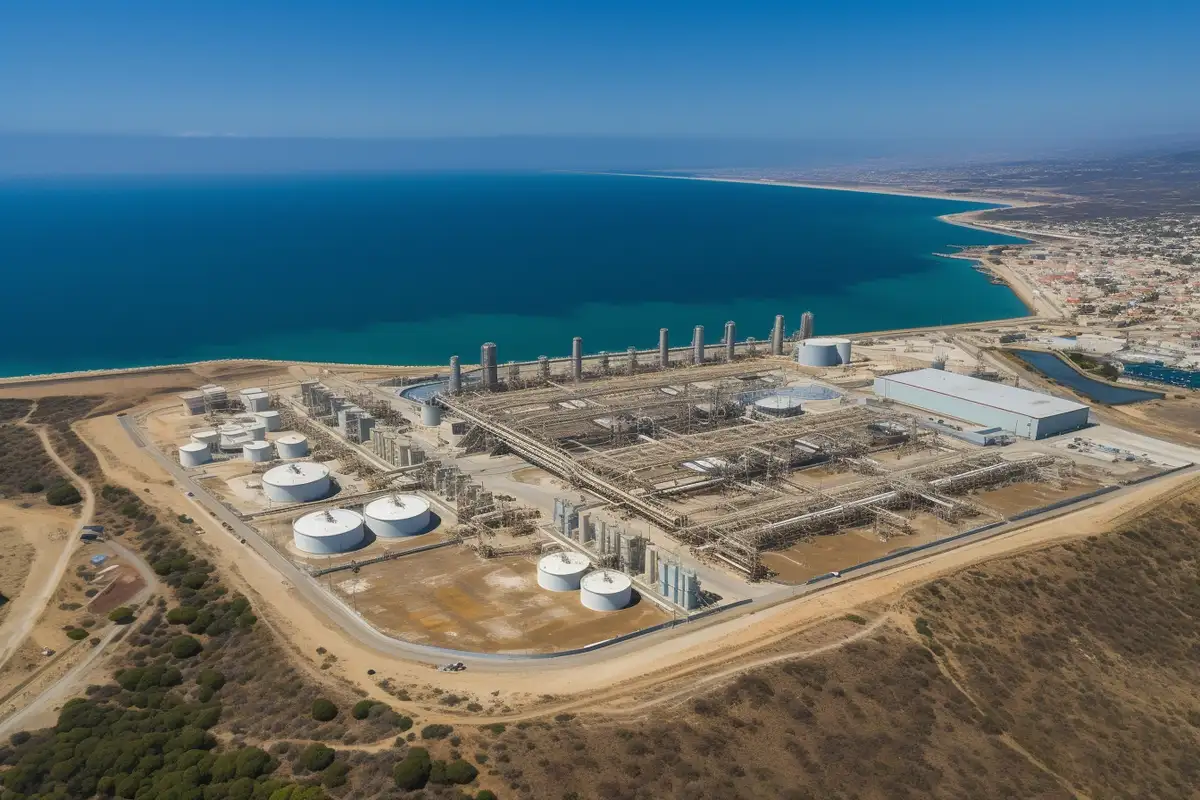Introduction
Desalination, the process of removing salt and other impurities from seawater, has become an increasingly important solution to address global water scarcity. With the world’s population continuing to grow and freshwater resources dwindling, desalination offers a viable alternative for obtaining fresh water. In this article, we will examine the cost per gallon of desalinated water and the factors that influence this cost. Understanding the economics of desalination is essential for governments, businesses, and communities as they work towards sustainable water management.
Desalination Technologies
There are several desalination technologies available, each with its own cost profile:
Reverse Osmosis (RO)
Reverse osmosis is the most common and widely used desalination technology. It works by applying pressure to seawater, forcing it through a semipermeable membrane that separates the salt and impurities from the water [1]. The cost of reverse osmosis has significantly decreased over the years, making it one of the most affordable desalination methods available today.
Multi-stage Flash (MSF)
Multi-stage flash is a thermal desalination process that involves heating seawater and allowing it to evaporate in multiple stages at reduced pressure [2]. The vapor is then condensed, producing fresh water. Although MSF was once the dominant desalination technology, it has been largely replaced by reverse osmosis due to its higher energy consumption and associated costs.
Multiple Effect Distillation (MED)
Similar to MSF, multiple effect distillation is a thermal desalination process that uses heat to evaporate and condense seawater in a series of stages [3]. MED is generally more energy-efficient than MSF but still less efficient than reverse osmosis.
Electrodialysis (ED)
Electrodialysis is an electrochemical desalination process that uses electrically charged membranes to separate salts from water [4]. While it has some advantages over other desalination technologies, such as lower energy consumption, it is not as widely used due to its higher capital and maintenance costs.
Costs per Gallon
| Desalination Technology | Cost per Gallon (USD) |
|---|---|
| Reverse Osmosis (RO) | $0.002 – $0.006 |
| Multi-stage Flash (MSF) | $0.004 – $0.010 |
| Multiple Effect Distillation (MED) | $0.003 – $0.008 |
| Electrodialysis (ED) | $0.005 – $0.012 |
The table on costs per gallon for different desalination technologies provides a general overview of the varying expenses associated with each method. Reverse Osmosis (RO) has a cost per gallon ranging from $0.002 to $0.006, making it one of the more affordable options [5]. Multi-stage Flash (MSF) comes in at a slightly higher cost, between $0.004 and $0.010 per gallon. Multiple Effect Distillation (MED) has a cost per gallon of $0.003 to $0.008, while Electrodialysis (ED) is the most expensive among the listed technologies, with costs from $0.005 to $0.012 per gallon.
To better understand the environmental impact of these desalination technologies, please refer to our article on The Environmental Impact of Desalination.
Factors Influencing Cost per Gallon
The cost per gallon of desalinated water can vary widely depending on several factors:
- Scale of desalination plant: Larger plants can achieve economies of scale, resulting in lower costs per gallon. Smaller plants, however, may have higher costs due to lower production volumes and less efficient operations.
- Energy costs: Desalination is an energy-intensive process, and the cost of energy can significantly impact the overall cost per gallon. Countries with low energy costs or access to renewable energy sources can produce desalinated water at a lower cost.
- Geographic location: The location of the desalination plant can affect costs in several ways. Factors such as access to seawater, proximity to energy sources, and local regulations can all influence the overall cost of desalination.
- Feedwater quality: The quality of the seawater being desalinated can affect the cost per gallon. Seawater with high levels of salt or other impurities may require more extensive pre-treatment, increasing costs.
- Environmental considerations: Desalination plants must comply with environmental regulations, which can impact the cost of operations. For example, plants may be required to invest in technologies to mitigate their environmental impact, such as brine disposal or greenhouse gas emissions reduction.
- Maintenance and operational costs: The ongoing maintenance and operation of a desalination plant can contribute to the overall cost per gallon. Factors such as labor costs, membrane replacement, and chemical usage can all influence the operational costs of a desalination facility.
Cost Reduction Strategies
There are several strategies that can be employed to reduce the cost per gallon of desalinated water:
- Energy efficiency improvements: By investing in more energy-efficient technologies and processes, desalination plants can reduce their energy consumption and, consequently, their costs. For example, using waste heat from other industrial processes or integrating renewable energy sources can significantly lower energy costs [6].
- Pre-treatment optimization: Improving pre-treatment processes can reduce the need for chemicals, maintenance, and energy, resulting in cost savings. Advanced monitoring and control systems can help optimize pre-treatment and reduce fouling, scaling, and corrosion.
- Recovery of valuable by-products: Some desalination processes produce by-products, such as salt and minerals, which can be sold or used in other applications [7]. This can help offset the costs of desalination and reduce the overall cost per gallon.
- Public-private partnerships and financing: Collaborating with private entities can help secure financing for desalination projects and reduce costs. Governments can provide incentives, such as tax breaks or low-interest loans, to encourage private investment in desalination infrastructure.
- Research and development of novel technologies: Investing in the research and development of new desalination technologies can lead to more efficient and cost-effective solutions. For example, forward osmosis and capacitive deionization are emerging technologies that have the potential to significantly reduce the cost of desalination [8].

Case Studies: Cost Analysis of Desalination Plants Around the World
Carlsbad Desalination Plant, California, USA
The Carlsbad Desalination Plant is the largest seawater desalination plant in the United States, producing approximately 50 million gallons of fresh water per day [9]. The plant uses reverse osmosis technology and benefits from its proximity to existing infrastructure and access to renewable energy. The cost per gallon of water produced at the Carlsbad plant is estimated to be around $2,000 per acre-foot, or approximately $0.006 per gallon [10].
Sorek Desalination Plant, Israel
The Sorek Desalination Plant is one of the largest and most advanced desalination facilities in the world, with a capacity to produce 165 million gallons of fresh water per day [11]. The plant employs reverse osmosis technology and benefits from low energy costs due to its access to natural gas resources. The cost per gallon of water produced at the Sorek plant is estimated to be around $1,200 per acre-foot, or approximately $0.0036 per gallon.
Taweelah Desalination Plant, United Arab Emirates
The Taweelah Desalination Plant in Abu Dhabi became the largest desalination facility in the world in December 2021, with a planned capacity of 200 million gallons of fresh water per day [12]. The plant utilizes reverse osmosis technology and is being designed with a focus on energy efficiency and sustainability. The estimated cost per gallon of water produced at the Taweelah plant has not been disclosed, but it is competitive with other large-scale desalination projects.
Cost Differences According to Location
In our recent exploration of desalination costs, we discovered some fascinating insights when comparing various locations around the world. The table we generated highlights the differences in energy, labor, feedwater quality, and environmental compliance costs that contribute to the total cost per gallon of desalinated water in each region.
Carlsbad, California, for instance, experiences moderate energy and labor costs, low feedwater quality costs, but relatively high environmental compliance costs, resulting in a moderate overall cost per gallon. On the other hand, locations like Sorek, Israel, and Almería, Spain, benefit from low energy, labor, and feedwater quality costs, leading to a lower total cost per gallon.
| Location | Cost per Gallon (USD) |
|---|---|
| Carlsbad, California, USA | $0.006 |
| Sorek, Israel | $0.0036 |
| Perth, Australia | $0.0035 |
| Almería, Spain | $0.0025 |
| Dubai, United Arab Emirates | $0.0038 |
| Chennai, India | $0.004 |
| Location | Energy Cost | Labor Cost | Feedwater Quality Cost | Environmental Compliance Cost | Total Cost per Gallon |
|---|---|---|---|---|---|
| Carlsbad, California, USA | Moderate | Moderate | Low | High | Moderate |
| Sorek, Israel | Low | Moderate | Very Low | Moderate | Low |
| Perth, Australia | Low-Moderate | Moderate | Very Low | Low | Low-Moderate |
| Almería, Spain | Low | Low | Very Low | Low | Low |
| Dubai, United Arab Emirates | Low-Moderate | Moderate | Low | Moderate | Low-Moderate |
| Chennai, India | Low-Moderate | Low | Low | Moderate | Moderate |

Cost Differences in the United States
| Location | Cost per Gallon (USD) |
|---|---|
| Carlsbad, California | $0.006 |
| Tampa Bay, Florida | $0.0045 |
| El Paso, Texas | $0.005 |
| Yuma, Arizona | $0.0042 |
| Santa Barbara, California | $0.007 |
| Corpus Christi, Texas | $0.0055 |
The differences in the cost per gallon of desalinated water across various locations in the United States can be attributed to several factors:
- Desalination technology: Different plants may use different desalination technologies, such as reverse osmosis, multi-stage flash, or electrodialysis, each with varying levels of cost efficiency and energy consumption.
- Plant scale: The size of a desalination plant can impact the cost per gallon, as larger plants often benefit from economies of scale, leading to lower production costs [13].
- Energy costs: Regional variations in energy prices can significantly affect the cost of desalination, as energy-intensive processes like reverse osmosis require substantial power to operate.
- Feedwater quality: The quality of the source water being treated plays a vital role in determining the cost per gallon. High salinity or the presence of contaminants can increase the complexity and cost of the treatment process.
- Environmental compliance: Different regions have varying regulations and environmental compliance requirements, which can impact the cost of building and operating a desalination plant.
- Labor costs: Labor costs vary across the United States, with some regions having higher wages and associated costs than others. This can influence the overall cost of desalination [14].
- Local infrastructure and logistics: The availability of existing infrastructure, such as pipelines, storage facilities, and transportation networks, can impact the cost per gallon. Inadequate or costly infrastructure can lead to higher desalination costs.
Environmental and Social Considerations
While desalination provides a valuable source of fresh water, it also comes with environmental and social considerations. The process can have negative impacts on marine ecosystems, produce large volumes of brine as a waste product, and contribute to greenhouse gas emissions. Furthermore, the cost of desalinated water can be prohibitive for some communities, leading to issues of water access and affordability [15]. For a more in-depth analysis of these challenges, refer to our article on The Dark Side of Desalination: Environmental and Economic Challenges.
As the demand for desalinated water increases, it is crucial to strike a balance between meeting water needs and mitigating the potential negative impacts of desalination. This can be achieved through the development and adoption of more sustainable technologies, responsible management practices, and policies that address water access and affordability.
Conclusion
The cost per gallon of desalinated water is influenced by a variety of factors, including the desalination technology used, plant scale, energy costs, geographic location, feedwater quality, and environmental considerations. By understanding these factors and implementing cost reduction strategies, the affordability of desalinated water can be improved, making it a more viable solution to global water scarcity.
Investments in research and development, as well as collaboration between public and private sectors, are essential for driving down the cost of desalination and increasing its sustainability. As the world continues to grapple with water scarcity and climate change, desalination will play a crucial role in achieving global water security and sustainable development goals.
To learn more about sustainable water management and other related topics, explore our articles on How Sustainable is Desalination? and Why Desalination is Crucial for Sustainable Water Management: The Ultimate Guide.

